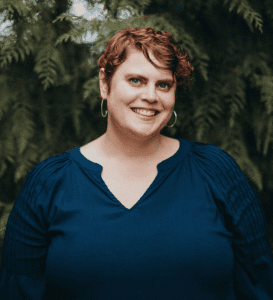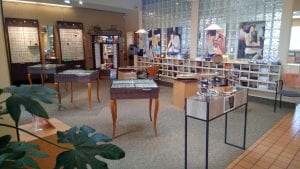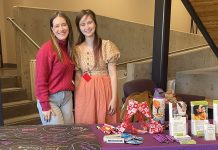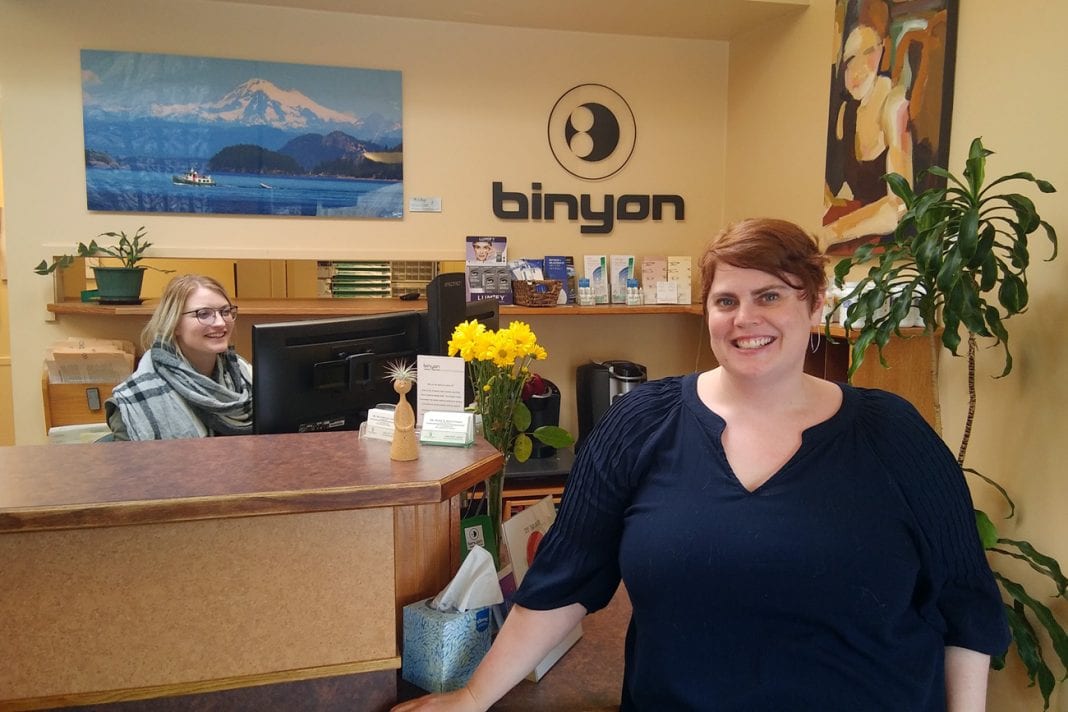Our eyesight is a funny thing: it’s incredibly important to us, almost every moment of every day. But we often take it for granted, and don’t really think about maintaining it. Fortunately, there’s a new eye doctor in town, and she’s on a mission to keep us all seeing—and looking—our best.

Dr. Heather LeClaire grew up in a small Minnesota town and attended college at Ohio State. A science student, she was drawn to a career in healthcare, and after a little soul searching—she knew she didn’t want to work on the insides of people’s mouths or spend her days being on call—optometry stood out as the path to take. And after visiting a friend in the Pacific Northwest, she also knew that she wanted to call this part of the world home.
She landed in Seattle in 2004, and practiced there for nearly 14 years—and then she was ready for a change. “I wanted to get out of Seattle,” she says, “to a place I could relax more and enjoy things.” She spoke with a sales representative familiar with many of our region’s optometry offices, and got a picture of what Bellingham had to offer—and a pretty good idea of where she might best fit in.
Dr. LeClaire was happy to find an opening at Bellingham’s Binyon Vision Center in October 2018—a practice led by Dr. Mark McEathron that shares many of her values, including a friendly relationship among the workers, and a caring attitude toward the public. Office Manager Caitlin Bruno explains the rapport between staff and their clients at “the equivalent of a family practice.” The fact that the office crew, the doctors and the team of licensed opticians maintain such a friendly atmosphere is a refreshing change from many health care practices.

Dr. James Binyon originally started his business in Seattle in 1911, and it soon grew into a chain of offices across Washington State. When he passed on, the chain broke up into independent stores. His nephew took over the Bellingham branch in the 1950s, until Dr. McEathron joined the team in 1980; he bought the practice in 1985. The practice moved around the downtown area a few times over the years before settling into its present location in 1993. The building was formerly a pizza restaurant with a firefighting theme, and renovations included dealing with a bright red paint job and walls decorated with axes, hoses and other firehouse gear.

Nowadays, most of the floor space is devoted to colorful displays of eyeglass frames. This setup isn’t unusual, but it turns out those frames represent an important part of the Binyon business plan. These days, nearly all the frames you see people wearing are manufactured by just one company, and sold under a variety of different brand names. But Binyon has chosen a different route: working only with independent frame manufacturers. Their reason is one of the factors that makes it a fitting home for Dr. LeClaire, who stresses that “it good to support craftspeople, not corporations.”
Besides the ethics and the fashion statements, there’s the eye care side of the business, of course. When I asked what message she would like to get out to the public regarding their eyes, Dr. LeClaire came up with quite a list of considerations, such as always wearing sunglasses when out in bright light.
“And I’m always telling people: ‘Get your blink on,’” she says. You may know that blinking cleans, lubricates and protects the eyeball, but you might not realize that when we spend time in front of computer monitors and other screens, we don’t blink as often—or as completely—as usual. You read that right: when we blink in front of the computer, we tend not to close our eyelids completely.

Another way to avoid the eye fatigue associated with computers is to take advantage of blue light protection. Monitors and cell phones put out much more light in the blue part of the spectrum than we’re accustomed to, and we don’t yet know what the effects of all that exposure might be. Most displays have settings that soften the glow (my phone allows me to choose “Comfort View”), many software companies offer programs that cut down on blue light, and many people opt for a specific pair of computer glasses with lenses that filter the blues.
Finally, there’s Dr. LeClaire’s 20/20/20 rule: “After every 20 minutes of screen time, look at something at least 20 feet away, for 20 seconds,” she says. It’s not a sales pitch, just a good habit. Because, to Dr. LeClaire, it’s not just about getting you into a pair of glasses, “we’re also here checking your eyes for health.”
Sponsored











































